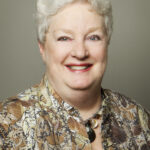The terms “biohazardous material,” “biohazardous waste,” “medical waste,” “regulated waste,” and “regulated medical waste” are used somewhat interchangeably, but they all have different definitions, and the definitions can change depending on the state in which you are located.
Biohazardous Material
– refers to materials that present a risk or potential risk to the health of humans, animals, or the environment. They can be infectious agents or chemicals or other products that can damage the environment. Certain chemotherapy drugs and most laboratory reagents fall into the biohazardous material category.
Biohazardous Waste
– refers to waste (e.g. body fluids or tissues) which has the risk of carrying human pathogens. Biohazardous Waste is usually generated at health care facilities or research facilities, and the term is used interchangeably with Medical Waste.
Regulated Waste
– is the term OSHA uses to describe blood and body fluids and “OPIM” (other potentially infectious material) as defined in the Bloodborne Pathogens regulation (BBP).
Regulated Medical Waste
– refers to biohazardous waste whose handling is regulated by state or federal laws.
In a medical practice or laboratory we are most often concerned with the BBP-defined Regulated Waste and the state-defined Regulated Medical Waste which we must discard per state and federal regulations. The failure to understand the difference in the definitions can lead to unnecessary expenses for disposing of regulated medical waste.
The Bloodborne Pathogens Standard uses the term “regulated waste” to refer to the following categories of waste:
- Liquid or semi-liquid blood or other potentially infectious materials (OPIM)
- Items contaminated with blood or OPIM and which would release these substances in a liquid or semi-liquid state if compressed
- Items that are caked with dried blood or OPIM and are capable of releasing these materials during handling
- Contaminated sharps
- Pathological and microbiological waste containing blood or OPIM
In order to avoid some confusion, I’m going to refer to the BBP-defined regulated waste as “medical waste” or “biohazardous waste” to more easily differentiate it from “regulated medical waste” as administered by the state.
Biohazardous Medical Waste:
- must be discarded in containers that are clearly marked with a biohazard symbol or in a red bag, which is universally accepted as a symbol of biohazardous waste.
- sharps must be disposed of in hard-sided containers which cannot be penetrated by the sharp material and marked as biohazardous if the container has potentially infectious material within. Almost all sharps generated in a medical practice contain potentially infectious materials.
“Regulated Medical Waste” generally refers to waste whose disposal is regulated by state and/or federal laws. In North Carolina, regulated medical waste is defined in general as “blood and body fluids in individual containers in volumes greater than 20 ml, microbiological waste, and pathological waste that have not been treated pursuant to specific standards.” Therefore, a 10 ml tube of blood is medical (biohazardous) waste, but is not regulated medical waste — it doesn’t meet the 20 ml individual container specification. Table paper contaminated with blood or vaginal secretions is medical (biohazardous) waste but not regulated medical waste—it doesn’t meet the expressible blood specification.
Regulated medical waste:
- is generally handled by contracting with a waste management company to take the waste offsite and bury it or decontaminate it or otherwise destroy the potential for harm from it
- the big square boxes with the red liners and biohazard signs on all sides that you have picked up by waste disposal companies contain regulated medical waste
- you pay (per box) to have these removed
- you get a receipt when a box is picked up, and eventually a certificate with proof of destruction or decontamination. (This information must be saved for at least 3 years in NC.)
Technically, most medical practices do not generate any state-defined regulated medical waste. Individual tubes of blood or body fluids are almost always smaller than 20 ml. Urine, which is not considered medical waste unless it is visibly contaminated with blood or pus, may be disposed of by pouring it down the sink. Contaminated table paper doesn’t fit the “expressible blood” definition required for “regulated medical waste.” Gloves which do not have visible blood on them are not considered medical waste.
OK, so why are we paying so much
to have the big square boxes with the red liners picked up and taken offsite? Because most landfills won’t accept the red biohazardous bags in which we discard the biohazardous waste that is not regulated. Therefore the practice is left with little choice but to pack it up and send it with the waste management people as regulated medical waste. I would recommend checking with the municipal authorities to see if it is allowable to discard red biohazard bags (that don’t contain regulated medical waste) in the landfill. If your municipality does allow this, there is no need to put these red bags in the large boxes dedicated to regulated medical waste.
Whether or not you are allowed to dispose of biohazardous waste that isn’t regulated in the community landfill, you can limit the amount of regulated medical waste you have picked up by educating your staff as to what qualifies for the big square boxes or a biohazard bag disposal, and what can be put in ordinary trash.
Table paper that isn’t visibly contaminated does not qualify as medical waste – put it in the regular trash. Gloves that are not contaminated with blood can go in the regular trash. And make sure the staff isn’t putting paper waste into a big square box just because it is conveniently located!
Pearls of Wisdom from OSHA…per OSHA, it is the employer’s responsibility to determine the existence of medical waste. This determination, according to OSHA, should not be made based on the volume of blood, but rather on the potential to release blood (e.g. when compacted in a waste container). OSHA states that bandages which are not saturated to the point of releasing blood or OPIM if compressed is not considered biohazardous waste. Likewise, discarded feminine hygiene products do not normally meet the criteria for medical waste as defined by the BBP standard. Beyond these guidelines, it is the employer’s responsibility to determine the existence of medical waste.
Here is a link to a website where you can get to the state regulated medical waste regulations by state.
Consultant Elizabeth Knollmeyer, B.S., MT (ASCP) has over 40 years experience in the laboratory industry. She specializes in financial, operational management and compliance issues for both hospital and physician office laboratories. Libby has a wide variety of experience with her areas of special expertise including financial review and management, Quality Management protocols, Outreach development, compliance and regulatory assistance, lab design and up fitting, lab remodeling, and market research for IVD manufacturers. She works independently and with large consulting groups to provide interim management for hospitals, and serves as adviser to lab equipment and supply distributors. She can be reached at (336) 288-5823 or at eknollmeyer@triad.rr.com.




